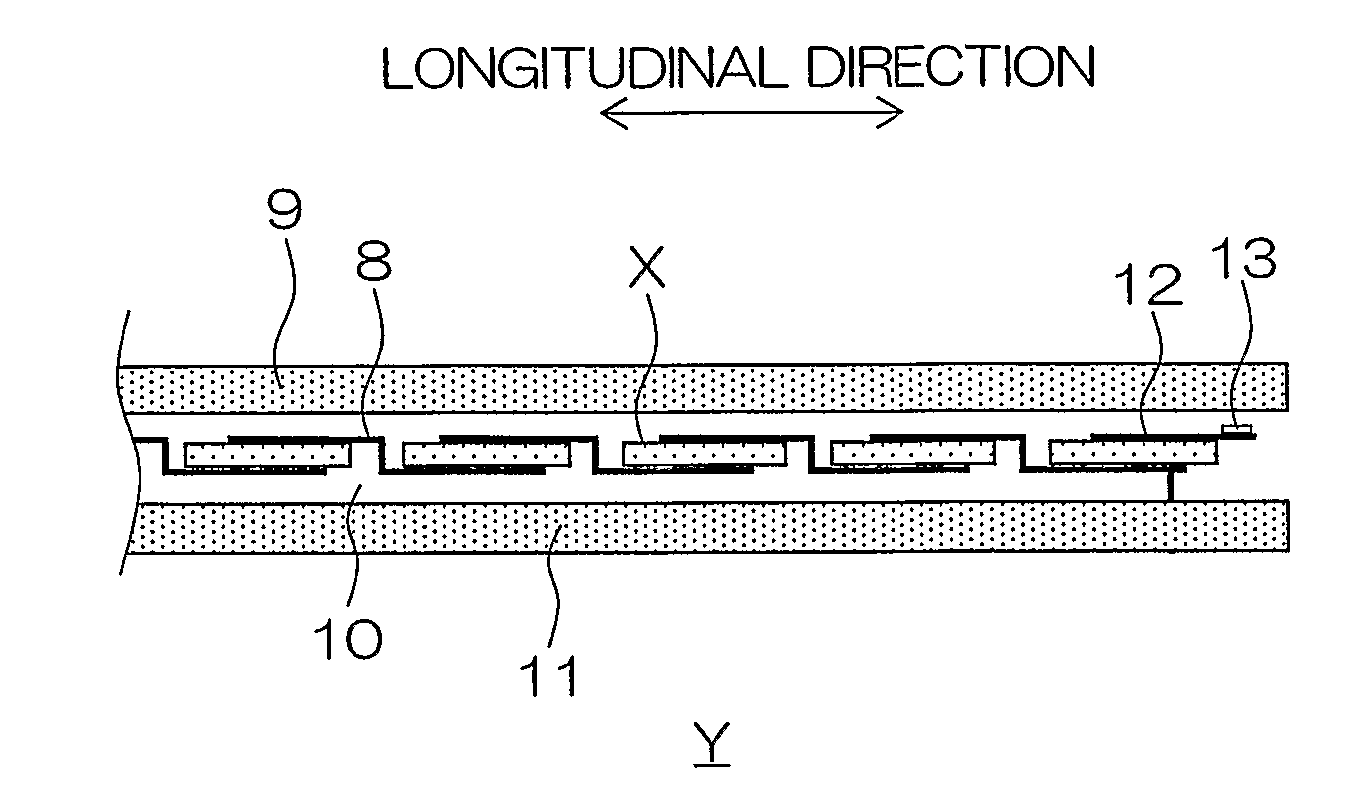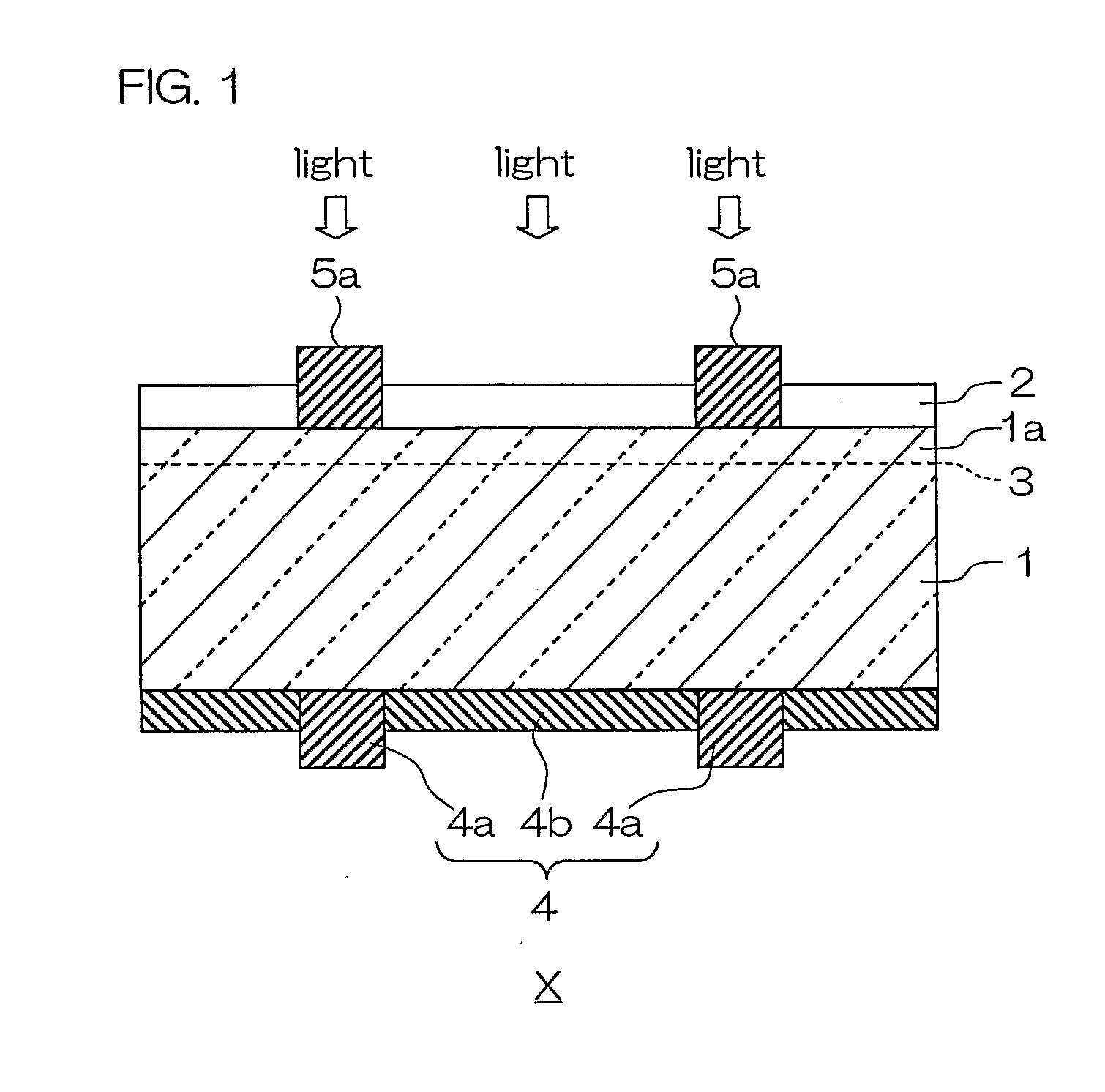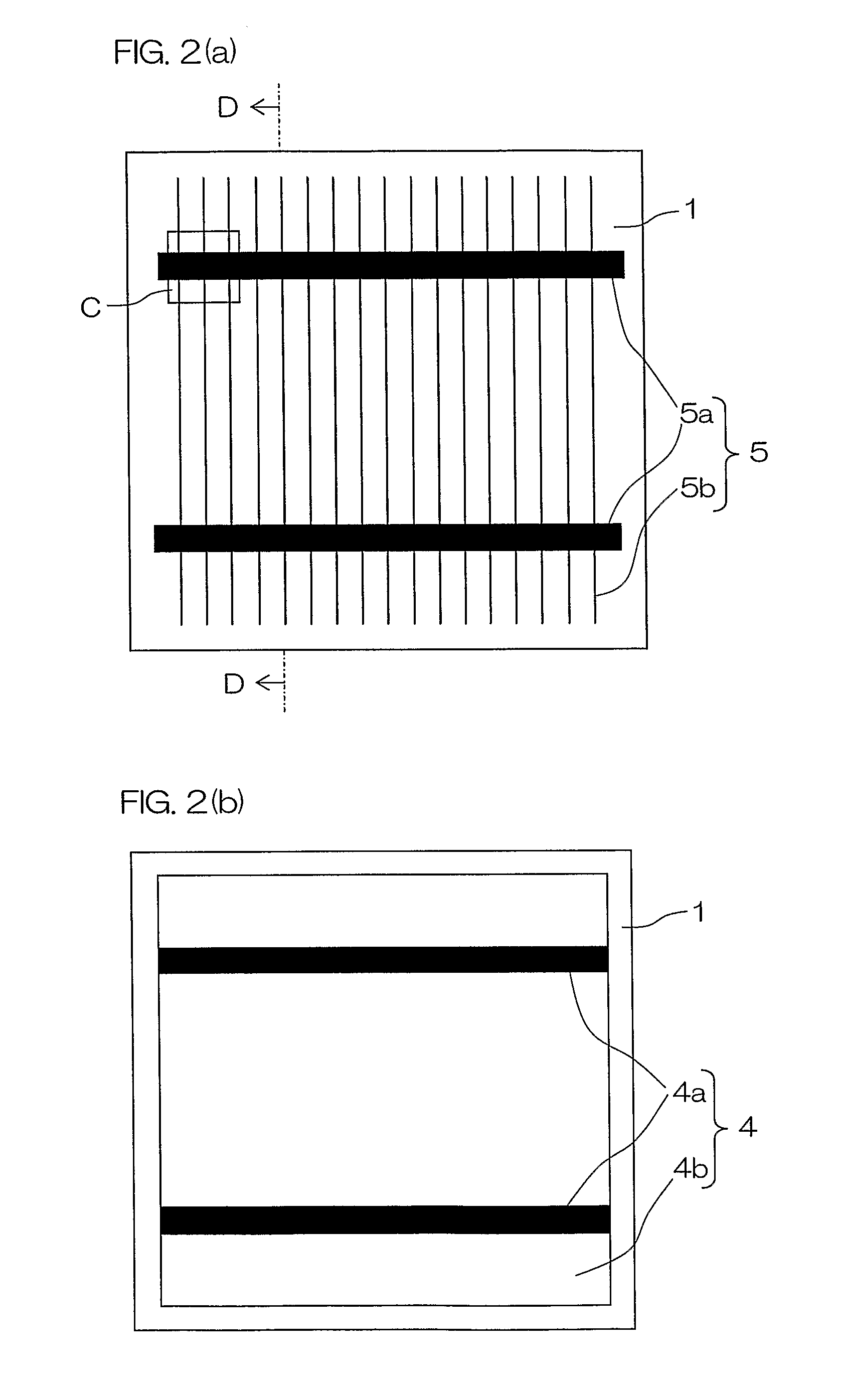Solar cell module
a solar cell and module technology, applied in the field of solar cell modules, can solve the problems of reducing long-term reliability, weak physical shock of solar cells, and inability to sufficiently extract or reduce output, so as to achieve the effect of increasing the breaking strength
- Summary
- Abstract
- Description
- Claims
- Application Information
AI Technical Summary
Benefits of technology
Problems solved by technology
Method used
Image
Examples
example 1
[0157] A damage layer on a surface of a p-type polycrystalline silicon substrate 1 having an outer shape of 15 cm×15 cm and having a relative resistance of 1.5 Ω·cm was etched and cleaned by an alkali. The silicon substrate 1 was then arranged in a diffusion furnace, and was heated in phosphorous oxychloride (POCl3), thereby diffusing a phosphorous atom on the surface of the silicon substrate 1 so as to have a concentration of 1×1017 atoms / cm3, to form an n-type diffusion layer 1a. A silicon nitride film having a thickness of 850 Å serving as an anti reflection film 2 was formed thereon by a plasma CVD method.
[0158] In order to form a back surface current collecting electrode 4b on a back surface of the silicon substrate 1, an aluminum paste produced in a paste shape by respectively adding 20 parts by weight and 3 parts by weight of an organic vehicle and a glass flit to 100 parts by weight of an aluminum powder was applied and dried by a screen printing method. In order to form a ...
example 2
[0176] Solar cells were formed in the same manner as that in the example 1. Thereafter, a solder resist was printed and applied with a pattern shown in FIG. 8 (b) to an area, on the side of a surface finger electrode 5b from one end at which the surface finger electrode 5b is connected to a surface bus bar electrode 5a to a distance of 1 mm therefrom and was thermoset, to form a coating member 14′. Thereafter, the inner lead 8 using a copper foil coated with a solder was thermally welded. In this case, an attempt to intentionally shift the position of the inner lead 8 to make the inner lead 8 jut out of the surface bus bar electrode 5a to intentionally connect them with a solder is made. However, with respect to a sample in which the coating member 14′ which is a solder resist is provided, they were not connected to each other in any way. Further, with respect to a sample in which the coating member 14′ is not provided, they are joined to each other in a case where a flux is applied...
example 3
[0185] Solar cells were formed in the same manner as that in the example 1.
[0186] An inner lead 8 using a copper foil having a width of 2 mm and having a thickness of 200 μm which is provided with a solder layer having a thickness of approximately 30 μm was then affixed by thermal welding such as hot-air welding over the whole lengths of bus bar electrodes 5a and 4a to which a flux was applied, to connect and wire the above-mentioned solar cells.
[0187] At this time, the composition of the solder was changed into a plurality of types of compositions. Solders used for samples No. 21 to 28 are ones composed of 1 to 90% by weight of Bi, 2% by weight of Ag, and the remaining percent by weight of Sn. Solders used for samples No. 29 to 32 are ones composed of 50% by weight of Bi, 0.1 to 9% by weight of Ag, and the remaining percent by weight of Sn. A solder in a sample No. 33 has a composition of Sn-5Ag-0.5Cu, a solder in a sample No. 34 has a composition of Sn-5Ag-0.5Cu, and a solder in...
PUM
 Login to View More
Login to View More Abstract
Description
Claims
Application Information
 Login to View More
Login to View More - R&D
- Intellectual Property
- Life Sciences
- Materials
- Tech Scout
- Unparalleled Data Quality
- Higher Quality Content
- 60% Fewer Hallucinations
Browse by: Latest US Patents, China's latest patents, Technical Efficacy Thesaurus, Application Domain, Technology Topic, Popular Technical Reports.
© 2025 PatSnap. All rights reserved.Legal|Privacy policy|Modern Slavery Act Transparency Statement|Sitemap|About US| Contact US: help@patsnap.com



